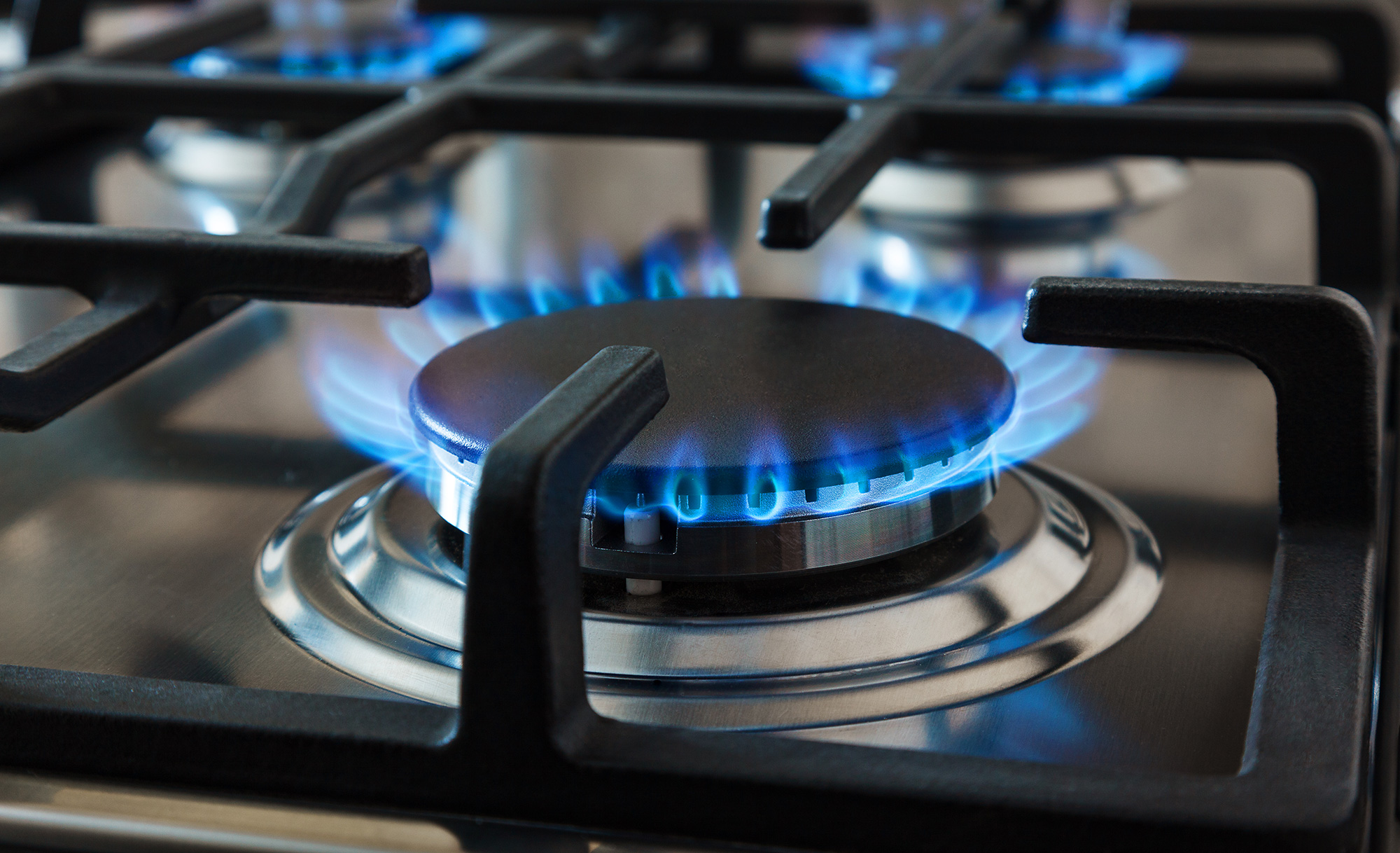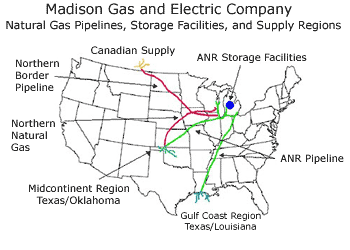
Natural Gas System
MGE purchases and distributes natural gas to customers in seven south-central and western Wisconsin counties. See our service area.
Building upon our long-standing commitment to providing affordable, sustainable energy, MGE has set a goal to achieve net-zero methane emissions from our natural gas distribution system by 2035. We are working to reduce overall emissions from our natural gas distribution system cost-effectively as quickly as possible.
How we purchase natural gas
MGE purchases gas on the open market from more than 25 marketers and producers. MGE pursues the best natural gas market prices available for customers, stores gas for the winter and employs a risk management program to reduce price swings for customers caused by gas price volatility.

Traditional natural gas supplies are produced in the Texas and Oklahoma panhandle region, the Gulf of Mexico and Canada. More recently, horizontal drilling has allowed producers to develop natural gas in shale basins in the northeastern United States, Texas and onshore Gulf Coast. MGE transports natural gas to its distribution system through two pipelines: ANR Pipeline Co. and Northern Natural Gas Co.
Storing gas
MGE purchases gas year-round to meet customer demand. We buy extra natural gas during the summer when use and prices are traditionally lower. Extra natural gas is injected into underground storage reservoirs connected to the ANR pipeline. The gas is withdrawn from storage and delivered to MGE customers during the winter when demand and price volatility are traditionally higher.
In the winter, about one-third of MGE's natural gas comes from storage, a third comes from market supply and a third comes from market supply with protection against extreme price increases.
MGE uses a risk management program that allows us to hedge a portion of natural gas supplies for our customers. A hedge is a financial tool, similar to insurance, that provides some protection from extreme price increases during the winter. The cost and benefit of the protection is passed directly to customers.
Natural gas prices
Your natural gas bill includes two main components: distribution and supply or commodity.
Distribution—This is a charge for delivering natural gas to a home or business. The charge covers distribution system costs such as local pipes, meters and customer service expenses. It does not change monthly, but it is adjusted periodically after review by State regulators.
Supply or commodity—The cost of natural gas that MGE buys for its customers is passed through to customers as a separate charge on the bill. It changes monthly depending on the current market price of natural gas, price of gas in storage and financial hedging that helps protect against extreme price changes.
How trading affects prices
Natural gas is one of many commodities traded on the New York Mercantile Exchange (NYMEX). Gas prices can fluctuate due to:
- Changes in gas supplies, including production and storage.
- Global tensions.
- The cost of competing fuels such as coal, oil and propane.
- Weather, such as extreme cold weather or hurricanes that may damage gas facilities or limit demand.
- Fluctuations in demand for natural gas both domestically and in overseas markets.
- Increasing reliance on natural gas to replace coal in manufacturing electricity.
Net-Zero Methane
We're aiming for net-zero methane emissions from our natural gas distribution system by 2035.
See our plans
